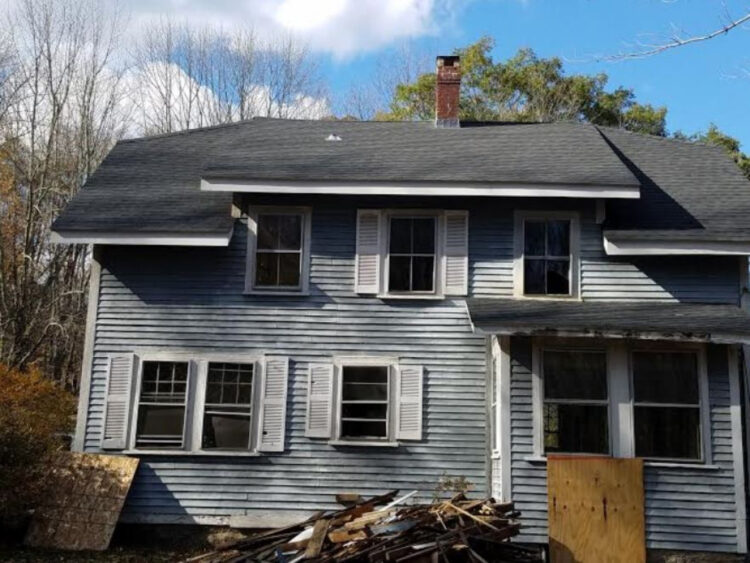No homeowner wants something bad to happen to their house. Even with insurance, there’s still the deductible, which can make even a covered disaster expensive. Not having coverage, however, would be even more disastrous.
Understanding the whole process helps bring homeowners peace of mind. Oftentimes, having an agent can help you navigate this process is helpful.
Before we dive deep, let’s look into what is an insurance claim?
According to kin.com (a fully licensed homeowner’s insurance carrier rated “A – Exceptional” by Demotech, Inc) “An insurance claim is a reimbursement for property damage by a homeowner’s insurance company based on the terms of their insurance policy.”
Most Common Claims

Identifying which claims are most common will help you understand how to handle the claim. Data between 2013 and 2017 from the Insurance Information Institute shows that the below events were the most likely to trigger homeowners’ insurance claims.
- 38% of claims result from wind and hail damage, including from hurricanes, tornadoes, and thunderstorms, averaging $10,182 per claim.
- 35% of Claims come from fire and lightning damage, tending to be the most expensive with an average $68,322 price tag
- 20% of claims result from water damage and freezing, from such things as burst pipes or water heaters, and average $10,234 on average.
- 4% of claims are from non-theft property damage and cost on average $5823 per claim, resulting from such things as a tree falling through your roof, a baseball through your window, or a car driving into your living room.
- 2% of claims come because someone was hurt on your property, and these average $26,085 per claim, though these are covered by homeowners’ policies.
- 1% of Claims involve theft, with an average claim costing $4263.
Making a Claim

If you’re put in a position where you need to make a claim, it’s important to understand how it works. You can see how it works by following the below steps.
The Inspections: The first thing you should do is meet with an insurance representative to evaluate the damage and to produce an initial estimate of how much the damages will cost to repair.
Filing the Claim: If you have an independent agent, you can let the agent handle the interactions between yourself and the insurance carrier. Otherwise, you will have to fill out the paperwork yourself, often spending significant time on the phone, though many insurers offer you the ability to file online.
The Adjuster: Once filed, an adjuster will schedule an appointment to inspect the damage. Meeting with the adjuster will help educate the homeowner on the extent of the damage, and it’s the adjuster’s job to initiate the process of settling the claim with an exact cost figure.
Choosing Materials: Selecting the type of roof, windows, storm doors, and generally choosing what colors and materials will replace damaged parts of your home can be one of the more fun parts of the process. Looking at a disaster positively, at least it forces you to redecorate, and it allows you to replace many of those things you were meaning to get to eventually.
Rebuilding: Living on a building site is not all that fun. Believe me, I’ve done it. But being on-site has its benefits, so that you can make sure that everything goes smoothly, and that the right colors and materials are used. It’s important to utilize a good crew for any construction work, so make sure that whoever you hire is insured and trained to do the work you require.
Inspection: Once all the repairs are done, an inspector should scrutinize them, ensuring that any issues are dealt with and any touch-ups made. The mortgage company will want the work to be done at the highest possible standard to keep the home’s value intact.
Ensuring Your Claim Gets Paid
There are a few basic things you should keep in mind whenever you make an insurance claim, including for your home. These tips will help ensure that you get your claim paid promptly:
- File promptly as soon as you know there’s sufficient damage to warrant a claim.
- Keep all the insurers’ contact information handy, or your independent agent’s number.
- Make sure you meet the insurer’s deadlines for information.
- Ensure that all the correct forms are filled out, with which your agent or the adjuster can help.
- Always respond promptly to requests for quotes or other information that the insurance company requires.
- Being there when the adjuster comes will ensure that your insurer understands exactly what was damaged.
Closing the Claim

Make sure that everything that was damaged is known by your insurance company. An agent is invaluable in helping you navigate this process to its end, and the fact is they do want you, and your mortgage company, to be happy with the results.
Sometimes the insurance company will make two or more payments, especially if your policy allows for replacement cost. An initial payment maybe for the actual value of the destroyed or damaged item, while the remaining payment would be the replacement cost.
Mitigate Your Risk
Before you have to file a claim, though, know what risks you want to be covered. In Florida, you would want some kind of storm coverage. Even if you’re not in an area that gets hit by hurricanes frequently, Florida has its fair share of hailstorms and thunderstorms, which can cause significant damage to any house in their own right.
There are a few simple and inexpensive solutions that help not only mitigate the risk of disaster but also lower your deductibles. For example, by owning a smoke alarm with working batteries, having a fire extinguisher, installing a security system, and keeping your plumbing updated, you can prevent having to make a claim in the first place
 Hi Boox Popular Magazine 2024
Hi Boox Popular Magazine 2024



